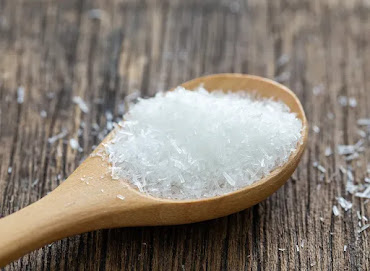What is MSG, is it actually bad for you?
Monosodium glutamate
MSG is a flavor enhancer that is commonly used in restaurant dishes, canned vegetables, soups, deli meats, and other foods. MSG has been designated as a generally recognized as safe food additive by the US Food and Drug Administration (FDA). However, its application is still up for discussion. As a result, the FDA requires MSG to be stated on the label when it is added to food.
For many years, MSG has been utilized as a food ingredient. During this time, the FDA has received numerous reports of alarming reactions that have been linked to MSG-containing foods. The MSG symptom complex includes the following reactions:
- Headache
- Flushing
- Sweating
- Face pressure or tightness
- Lack of feeling (numbness), tingling or burning in the face, neck and other areas
- Quick, fluttering heartbeats
- Chest pain
- Feeling sick (nausea)
- Weakness
However, no conclusive evidence of a relationship between MSG and these symptoms has been discovered by experts. However, researchers acknowledge that MSG may cause short-term responses in a small number of persons. Symptoms are frequently minimal and do not necessitate treatment. The only method to avoid a response is to avoid foods that contain MSG.
 |
| MSG (Monosodium glutamate) |
So what is this mysterious seasoning? Where does it come from, and is it actually bad for you?
MSG is a mixture of two common substances. Sodium, which is well-established as an essential part of our diet, and glutamate, a very common amino acid found in numerous plant and animal proteins. Glutamate plays a key role in our digestion, muscle function, and immune system.
Its savory flavor can be found in foods like mushrooms, cheese, tomatoes, and broth. MSG was created in 1908 in order to provide this rich flavor. Dr. Ikeda Kikunae, a Japanese chemist, was attempting to isolate the chemical responsible for a flavor he dubbed "umami," which means "good, savory taste." In culinary science, umami is now considered one of the five basic flavors. Each basic taste is created by distinct molecular pathways that cannot be duplicated by mixing flavors.
When we heat or ferment certain foods, we break down their proteins and release amino acids like glutamate, resulting in the release of umami. However, Ikeda discovered a delectable shortcut to achieving this chemical reaction. He devised a condiment that rapidly improved the umami of any dish by separating large amounts of glutamate from a bowl of noodle broth and combining them with another taste enhancer like sodium.
See here



Comments
Post a Comment
If you have any doubts, Please let me know.